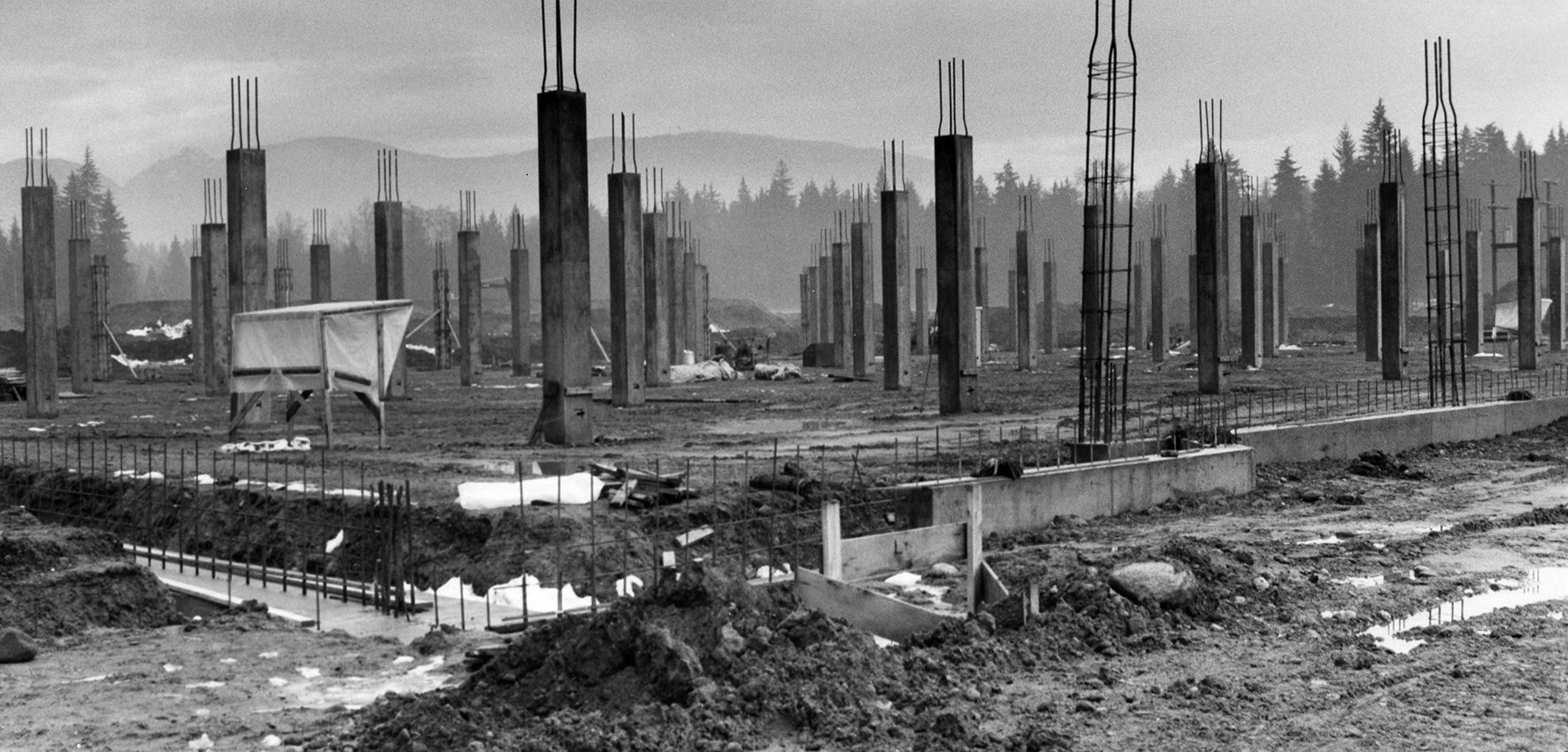Intersectionality and Urban Spaces: Coquitlam Heritage’s Newest Exhibit on Display at the Coquitlam Library
PILLARS WITH A VIEW (CRAIG HODGE, COLUMBIAN COMPANY FONDS, F8-S1-F16.2, CITY OF COQUITLAM ARCHIVES)
Coquitlam Heritage’s newest exhibition on display features many facets of urban life in Coquitlam and the Lower Mainland. The exhibition seeks to teach visitors about the ways in which people shape their urban spaces, the ways in which urban spaces shape people’s experiences and lives, and the ways that people of different identities interact with the built environment.
Learn about the history of segregation in North American cities, and how it has affected different racial groups’ ability to access appropriate housing. Despite the 1960s being a time for social change, many groups still worked to keep neighborhoods segregated, with realtors using many unscrupulous tactics to force Black people away from white neighborhoods. Also, you can learn about the role that gentrification can play in disrupting low-income communities. Besides housing, gentrification can affect work as well. For example, when industrial job districts are converted into high priced apartments, the jobs that many people relied on are lost. These differing forms of gentrification have affected people from many different communities across North America. Gentrification and the raising of prices in an area makes life difficult in many other ways. Food prices may go up, or ethnic staples once relied on may disappear as small grocers are pushed out. This is just one example of food insecurity, a problem that many face in Canadian Cities.
Other aspects of harmful urban development are also on display at the new exhibition. Learn about ‘hostile architecture’ and how it can be disguised into the mundane environment. Hostile Architecture intends to deter a group of people from using a space, normally this refers to preventing the unhoused from being able to sleep or stay for a long time in one spot. This may come in the form of segmented benches that make it difficult or uncomfortable to lay on them or leaning benches sometimes seen in train stations that are only intended for short term use. Some examples can be harder to spot, like large planters blocking alcoves, or sprinklers that water gardens also being designed to spray nearby pavements at night. These examples of hostile architecture do nothing to address the issues causing homelessness, instead, they work to further marginalize an already vulnerable population.
Learn about the history of public transit in Coquitlam and the Lower Mainland. Did you know there was light rail service here before the advent of the Skytrain as part of Expo86? The Interurban Railway was initially a small scale electric railway network in Vancouver, however, it soon spread to many other municipalities nearby, including Coquitlam! It remained in some areas all the way until 1979, but by that time it was a shell of its former self. Most of its services ended in 1950s with the advent of more bus services across Lower Mainland cities. Vancouver’s new light rail system, the SkyTrain took nearly a decade to design and develop prior to its opening in 1986 for the World’s Fair. One line still bears a name in reference to the grand event, the Expo Line. Learn about the importance of these and other public transportation networks in large cities at the new exhibition. You can also learn why it’s so important for all facets of a transit network to remain accessible for everyone.
The exhibition also features some history on so-called ‘adventure playgrounds’ or ‘junk playgrounds’ as they are sometimes less flatteringly known. These spaces work to give children an area of the built environment to call their own. Also, many have found that the increased risk offered to children allows them to play at a risk level they feel comfortable with. This is in comparison to safer playgrounds that children may feel are not exciting or risky enough, leading them to use equipment in dangerous and unintentional ways. The adventure playground also offers children the opportunity to build their own play structures, exercising their creativity and teamwork skills in designing something that they want to use.
We invite you to think about the different ways that you and those you know, or even those you don’t know, experience the city. People of different racial and cultural backgrounds, income levels, or varying levels of ability all experience the city differently. Next time you are out and about, stop and think about what things you take for granted about the city, what things you avoid, and why you might avoid them. Some things that might not bother you, like a bump in the sidewalk, may be an extreme obstacle for someone else to navigate.
We hope you visit our newest exhibition at the library to learn more about Intersectionality and Urban Spaces, and the ways in which the city can shape and be shaped by us, how people experience it, and the history of how it all came to be.




